Introduction to Multiple Disability: Module 7
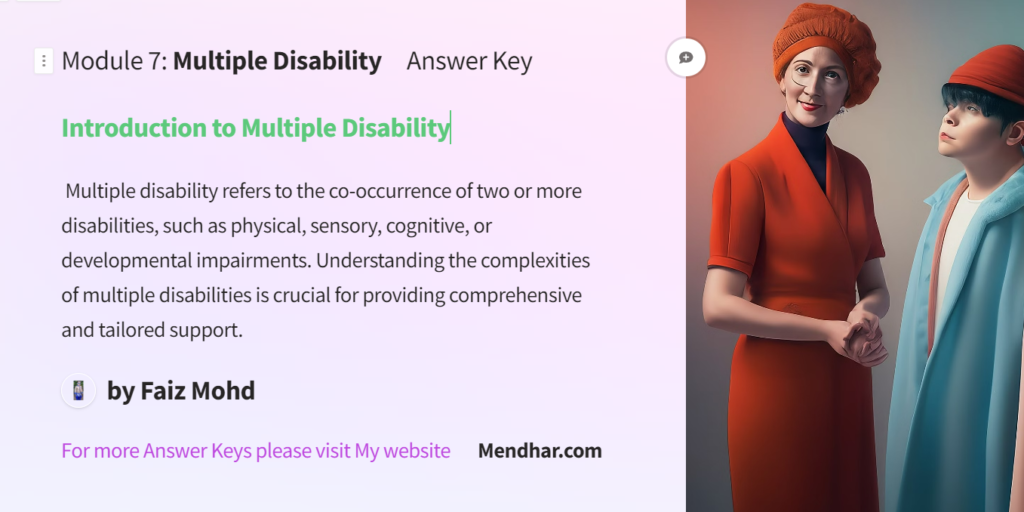
Welcome to an insightful exploration of a crucial aspect of human diversity: multiple disability. In this article, we delve into the nuances of living with multiple disabilities, shedding light on the challenges, initiatives, and support systems, particularly focusing on the laudable efforts of the Government of India in this domain.
Understanding the term “multiple disability” is pivotal. It refers to individuals who experience two or more disabilities simultaneously, which could include physical, sensory, intellectual, or developmental disabilities. Such conditions pose unique hurdles, affecting various aspects of life, from mobility to communication and learning abilities. In Module 7 of our series, “Introduction to Multiple Disability,” we unravel the complexities surrounding this condition.
The Government of India has undertaken significant initiatives to address the needs of individuals with multiple disabilities. One notable effort is the implementation of comprehensive support frameworks aimed at enhancing accessibility, education, healthcare, and employment opportunities for this demographic. Through various schemes and programs, such as the National Trust Act, 1999, and the Rights of Persons with Disabilities Act, 2016, the government strives to empower individuals with multiple disabilities, fostering inclusivity and dignity. By emphasizing holistic support and advocacy, these initiatives aim to alleviate barriers and facilitate a more equitable society.
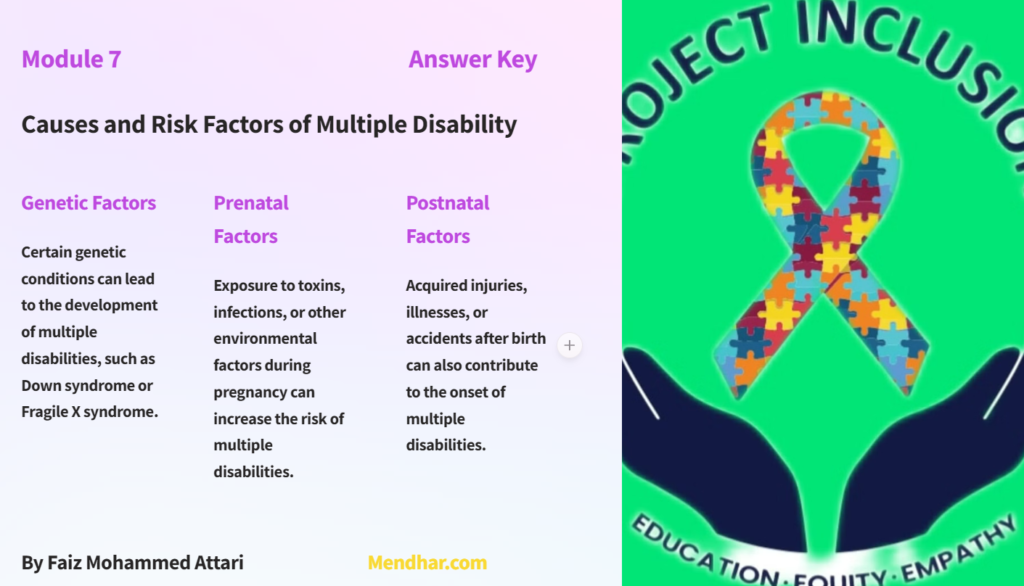
Multiple Disability: Module 7 Answer key
Assessment of Multiple Disability : Module 7
1. The term ‘multiple disability’ is an umbrella term used for the combination of two or more disabilities as per the RPWD Act, 2016.
– True ✔️
– False
2. Which of the following is/are an example/s of multiple disabilities?
– Cerebral palsy with intellectual impairment and autism
– Visual impairment with intellectual impairment
– Autism with intellectual impairment and ADHD
– All of the above ✔️
3. Children may be born with one disability, but may develop a second or third disability in later years.
– True ✔️
– False
4. Some children with multiple disabilities may show self-stimulatory behavior.
– True ✔️
– False
5. Children with multiple disabilities require a lot of assistance in performing simple routine activities, like eating, bathing, dressing, etc.
– True ✔️
– False
6. Specific checklists are used to screen or test for multiple disabilities in children.
– True ✔️
– False
7. Every year on 3rd December, the international day of persons with disabilities is celebrated.
– True ✔️
– False
8. The common characteristics in children with multiple disabilities is/are:
– Interaction with the environment becomes very limited.
– Ability to move around in the environment is restricted.
– Regular help is needed in simple day-to-day activities.
– All of the above ✔️
9. Due to the combination of two or more disabilities, the rate and speed of learning of children are very fast.
– True
– False ✔️
10. Children with multiple disabilities should be taught:
– To carry out daily activities on their own
– To become independent in social interactions
– To learn skills to earn money in the future
– All of the above ✔️
11. Some children with multiple disabilities may receive insufficient stimulation and consequently show low levels of happiness or satisfaction.
– True ✔️
– False
12. Students with multiple disabilities often need support in every aspect of their lives, both in the classroom and beyond.
– True ✔️
– False
13. Children with multiple disabilities may be born with all disabilities at once.
– True
– False ✔️
14. The rate and speed of learning of children with multiple disabilities are often slower compared to those without disabilities.
– True ✔️
– False
15. Children with multiple disabilities may have difficulties in communication, mobility, and self-care.
– True ✔️
– False
16. Children with multiple disabilities may exhibit challenging behaviors, such as self-stimulatory behavior or aggression.
– True ✔️
– False
17. Children with multiple disabilities may benefit from individualized education plans (IEPs) to address their unique needs and abilities.
– True ✔️
– False
18. Children with multiple disabilities may require specialized equipment or assistive devices to help them perform daily activities.
– True ✔️
– False
Let me know if you need further clarification or assistance!
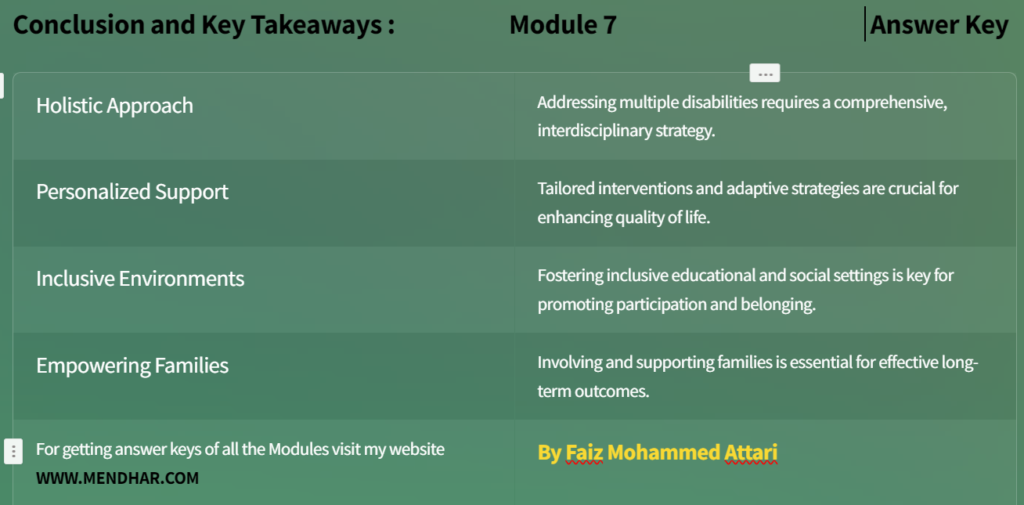
Moreover, the government’s commitment extends to educational initiatives tailored to the needs of individuals with multiple disabilities. Special education programs, inclusive schooling practices, and the provision of assistive technologies are pivotal components of these efforts. By promoting inclusive education, the government endeavors to create environments where individuals with multiple disabilities can thrive academically and socially. Additionally, vocational training and skill development programs equip them with the necessary tools to pursue gainful employment, fostering independence and self-sufficiency.
In conclusion, “Introduction to Multiple Disability: Module 7” offers valuable insights into the lived experiences of individuals facing the complexities of multiple disabilities. By examining the multifaceted nature of this condition and highlighting the initiatives of the Government of India, we gain a deeper understanding of the challenges and opportunities within this domain. As we strive for a more inclusive society, it is imperative to recognize the inherent dignity and worth of every individual, irrespective of their abilities. Through concerted efforts and collective advocacy, we can create a world where everyone, including those with multiple disabilities, can lead fulfilling and meaningful lives.


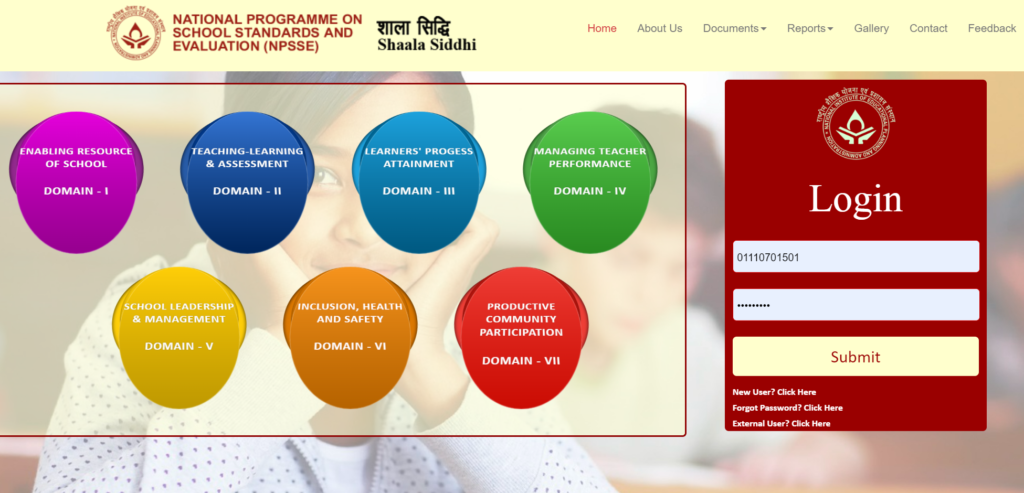
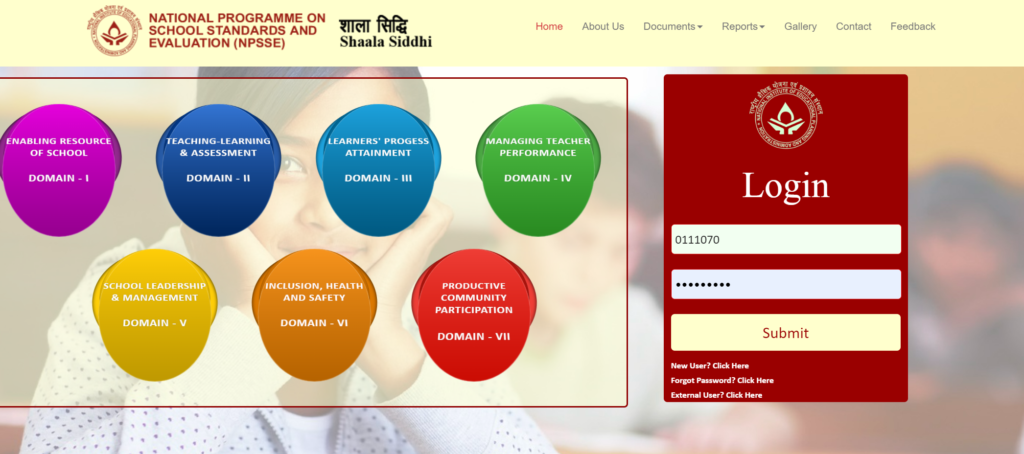
Pingback: Intellectual disability:Teaching strategies-Module 10 -